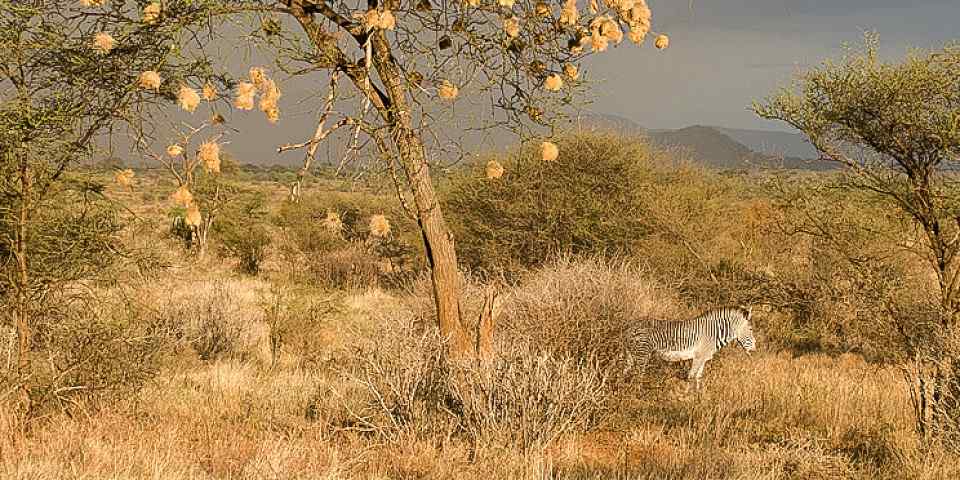 US
US
Email Charlie | 50-65 years of age | Experience level: first safari
We found Kenya a friendly welcoming country with incredible geographical diversity.
Our experience was incredible, we went from a vibrant cosmopolitan city to plains ravaged by drought to lush mountains and brilliant lakes. The people we encountered were very friendly and welcoming.
 FR
FR
Email Maud | 20-35 years of age | Experience level: 2-5 safaris
Best trip ever
Incredible trip, would recommend 100%.
The communication was easy ever since the reservation, with Anthony replying quickly and making arrangements for us.
Then the safari itself was awesome, Moses was the best guide ever!
He taught us a little bit of swahili and a lot about Kenya, Kenyan people and culture during the roads between the differents parks. We took the mini van option, very convenient.
During game drive, he taught us a lot about animals and he was the best to spot them (20/20 vision!) and allow us to take the best pictures, with respect for the animal (safe distance, not harassing them). He was also so nice and funny with a communicating good mood!
We saw so many animals during the trip, including one magnificent lion in the sunset under the rain, magical!
The places where we sleep (Sarova Lion Hill Lodge in Nakuru Park and Sarova Mara Camp in Maasai Mara) were incredible as well, rooms were clean, beds confortable, food for all taste and delicious. People working there were all very welcoming and nice to us.
I think the itinerary was very good, beginning with lake Nakuru and ending with the Maasai Mara, it was a crescendo of wonder!
We had enough time to really enjoy the game drive, with also some calm moments when we could enjoy the swimming pool, making this trip not tiring at all.
In conclusion, we would recommend this trip to anyone, and another word for the best of the best guide ever, Moses!
 US
US
Email Briana | 20-35 years of age | Experience level: first safari
It felt like we were in an animal documentary- seeing God's creation that close is indescribable.
We went to four different national parks- Samburu, Aberdere, Lake Nakuru, and Masai Mara. Each one was unique and incredible. Samburu has a lot of species that you can only see at that park. It was very far away, but the resort we stayed at was absolutely beautiful even though we were out in the middle of nowhere. At Aberdere we stayed at a hotel that was right in front of a watering hole so in the morning we got up early and had coffee and watched the African sunrise and the animals start to come to the watering hole. Lake Nakuru is where we saw a rhino! It was also our favorite accommodation. Masai Mara is where we saw the most variety of animals and saw animals attacking their prey! Every park was incredible. Spirit of Kenya made this trip so easy and amazing.
 US
US
Email Joseph L. Stewart | 50-65 years of age | Experience level: first safari
Amazing !!!
never seen so much open land in my life, just beautiful !!!
 US
US
Email David Michael Grant | 50-65 years of age | Experience level: 2-5 safaris
 CA
CA
Email Asaph | 35-50 years of age | Experience level: first safari
Amazing nature
The number of animals in the parks was stunning and they were so accessible. Kenya exceeded my expectations.
 US
US
Email James | 35-50 years of age | Experience level: first safari
Kenya is filled with very welcoming people and beautiful nature
The people of Kenya are very welcoming to tourists. I found that getting around is very easy if you speak English. Kenya lacks many of the modern day amenities of developed western countries, so be prepared for a culture shock if it is your first time. You should be pretty safe if you stay in the more tourist-y parts of the major cities. The safari was an experience of a lifetime, so the beauty of the natural world can really be experienced in Kenya.
 BE
BE
Email van Avermaet Stefan | 35-50 years of age | Experience level: first safari
Amazing!
It was amazing. The animals, the guide from Mustafa, the animals, our stay! Fell in love with Kenya
Email Cameron Clarke | 50-65 years of age | Experience level: first safari
'Budget' felt like luxury
We had a fantastic 4 day safari in Masai Mara. There was no shortage of wildlife - elephants, rhino, giraffe, leopards, zebra, lions, antelope, gazelle, hippos... And we were able to get quite close, too, for some great shots. I definitely recommend paying a little extra for a Landcruiser if you can. We went with Unscripted Safaris and Alex, the driver/guide, was brilliant. Knowledgeable, calm, organised and friendly. It made all the difference. The 'budget' safari felt quite luxurious so don't feel you need to splurge on extras. We could not be happier with the experience.
 US
US
Email Richard M Rubin | 65+ years of age | Experience level: first safari
Kenya has a mild climate (in October), complex and varied wildlife and engaging, helpful people.
My brother Musa and I, both septuagenarians, had an 11-day tour that included the Samburu and Masai Mara National Reserves, the Amboseli National Park, the Ol Pejeta Conservancy, and the Lakes Nakuru and Naivasha. The Mufasa Tours representative Joseph Wakaba worked with us to plan the kind of trip we desired. Our terrific guide and driver, Boniface (Odhis) Odhiambo knew the dirt roads in all the parks thoroughly. Odhis’s skill in navigation enabled us to cover much ground and see as wide a range of wildlife as possible.
In Samburu, where we started, he showed us reticulated giraffes, Somali ostriches, several lionesses, elephants, baboons, warthogs, a cheetah, several types of antelope—oryx, Grant’s gazelles, the long-necked gerenuk— and the endangered Grévy's zebras that were being fed hay to keep them alive during the prolonged drought. In Ol Pejeta, a herd of cape buffalo rested within easy eyesight across a ditch from the lawn of the Sweetwater Lodge. We were able to get very close to and even feed the blind black rhino Baraka. We visited the sanctuary for rescued chimpanzees and saw many mammals (including plains zebras, white rhinos, spotted hyenas, impalas, Thompson’s gazelles, elephants, and a cheetah) and birds (such as the African sacred ibis, the blacksmith lapwing, and the pied crow). At Lake Nakuru, there were white rhinos on the road and a black rhino in a field. We observed the preliminary mating ritual of two Rothschild giraffes. Most spectacular were the birds in the lake: a long row of the pink lesser flamingoes, numerous greater flamingoes and pelicans, and the colorful storks—both the yellow-billed and the Marabou.
We stayed three nights in Masai Mara. New animals to us there included the Masai giraffe (yes, there are three kinds of giraffe in Kenya), the topi and hartebeest antelopes, and the common ostrich. There were also many elephants and zebras and occasional warthogs and baboons. On the first full day, we saw several lions, including a male who walked among the several sightseeing vehicles that had gathered to see him as if they weren’t there. The crackle of the radio, as the guides let each other know where a lion, cheetah, or leopard could be seen, was one of the ambient sounds of our excursions. We traveled to the Masai River to see crocodiles and a school of hippos. Toward the end of the day, we followed a leopard stalking a topi antelope. The next day, we started before breakfast and saw a rare black rhino in the early light. During the day we tracked a herd of mama elephants and their children and saw a baby sucking milk from its mother with its mouth and not its trunk. Late in the afternoon, we stayed for a while with a lone cheetah and, after that, as the sun was setting, we encountered another black rhino moving through the grass.
At Lake Naivasha, we took a boat ride. The lake had several hippos and many birds—sacred ibis, great white pelican, pied kingfisher, Egyptian geese, and the stunning lilac-breasted roller. There were also young men who waded into the water to fish. At the end of the lake, we left the boat for a while to walk through a conservancy where we could walk right up to plains zebras, Masai giraffes, and waterbuck antelopes.
Amboseli was the last place we visited before returning to Nairobi. A good part of it is a treeless swamp fed by the rainfall on the nearby Mt Kilimanjaro. In the fall of 2022, the rest of the park was quite dry, as Amboseli was in the midst of a severe drought. Although there was much water in marshy areas, the vegetation that grows there is inadequate to support non-ruminant animals like wildebeest and zebra. These animals would become too weak to extricate themselves from the marsh, remain stuck there, and die of starvation. Elephants were a bit luckier. The full-grown elephants could pull themselves out of the swampy water and knew they needed to walk back to the forest at the foot of the mountain to eat from the trees and shrubs there. But the younger ones often had difficulty. We saw many hippos wading through the plants in the swamp. They fared better than the other large animals. We did see many living animals, but many dead and dying ones, too. (The Amboseli Conservation Program website says that 12% of the 10,000 wildebeest have died, 10% of the zebras, 5% of the elephants.) The smell of the air resembled that of the seashore at low tide. The vultures had many carcasses to choose from. There were birds everywhere of many varieties: flamingoes, ibises, egrets, pelicans, storks, and others. Amboseli showed us both the abundance of nature and its cruelty.
In Nairobi, after the safari, we had two excellent dinners. The first was at the Mama Oliech restaurant where we each had an entire tilapia surrounded with vegetables and drenched in African spices. The second restaurant was Stavros, where my brother had a poussin (chicken) dish and I had a spicy bronzini.
Our excellent guide Odhis could identify most of the animals and birds, but he appreciated the supplemented information we found on the internet or with the Merlin bird app (which worked quite well even in remote areas). He told us he liked that we were curious about many things and not just focused on seeing the large animals. If we asked him to stop or linger to look at something or take a photo, he always did; but if his radio told him of something of high interest that might soon disappear, we eagerly took his suggestion to seek it out.
Because we were on a private tour our other encounters with people were brief. Memorable ones include the playful concierge at the Boma Hotel who after getting to know us, advised us, “because you are my friends,” to take an Uber to the restaurant and to go sightseeing, because it was much cheaper than the taxi she would order us. My brother speaks Swahili and a smattering of Luo, the language of the region near Lake Victoria where he lived forty-five years ago. Odhis and several of his fellow drivers were Luo and they were astonished and pleased when Musa greeted them in their native language—pleased because it showed that he had more than a passing interest in their culture. Musa also had several engaging conversations with another Luo, the head chef of the Sopa lodge chain at the first of the two Sopa lodges we stayed at. I travel light and purchased only one small item—a beautiful finely carved elephant—at one of the several curio shops we stopped at. At others shops, I felt awkward and not wanting to buy things because this was how people in the shops made their living. When I told one older gentleman that I was an old man myself and needed to get rid of things more than to acquire new ones, he patted my back and smiled as if he understood.



















